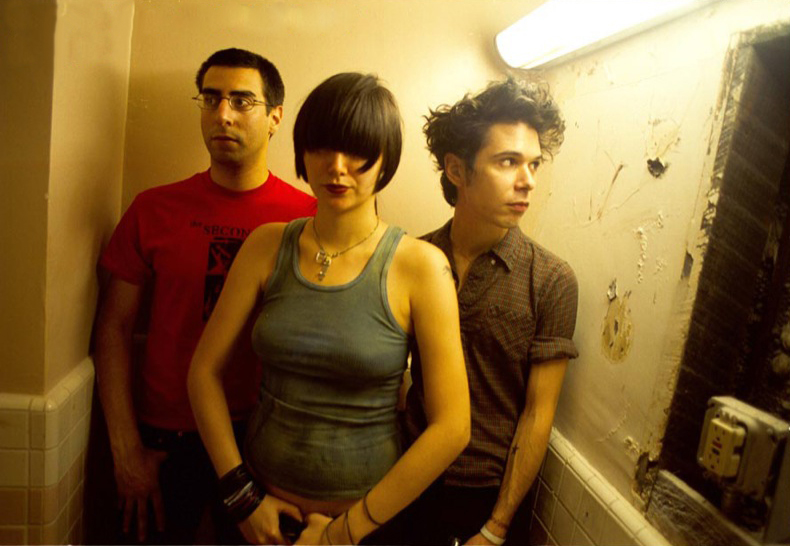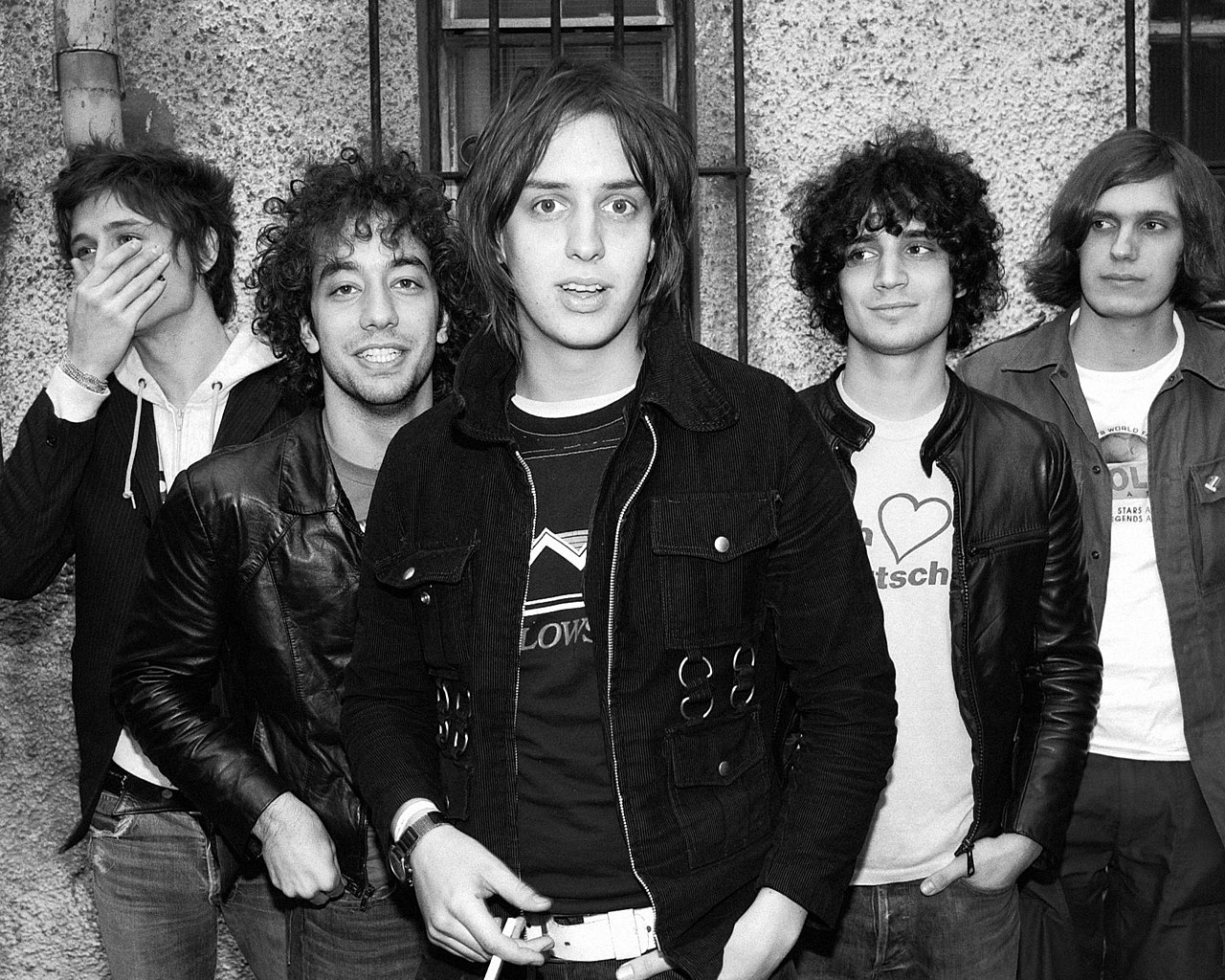- Film And TV
- 20 Apr 23

Paul Nolan runs the rule over the noughties NYC doc and reflects on his encounters with the era’s various stars
A couple of years ago during lockdown, I got an email from the London-based production company Pulse Films, concerning a documentary they were making about the noughties rock scene in New York.
The film would he based on and share its title with Lizzy Goodman’s definitive oral history of the period, Meet Me In The Bathroom, using archive footage and audio to explore an era that produced a spectacular amount of great bands, including The Strokes, LCD Soundsystem, Yeah Yeah Yeahs, Interpol, TV On The Radio, Liars and more.
Pulse’s online research had revealed that I’d done interviews with most of the dramatis personae – could I have a look and see if I’d kept any of the original recordings? I’d actually previously interviewed the co-directors of Meet Me In The Bathroom, Dylan Southern and Will Lovelace, about their Blur film No Distance Left To Run, subsequent to which they made Shut Up And Play The Hits, a brilliant account of LCD’s legendary 2011 show at Madison Square Garden.
The duo have amassed quite the CV, and I was happy to see if I had anything suitable for use in the film. Alas, a search through my old tapes revealed that a lot of the interviews I’d done with James Murphy, Paul Banks et al had long since bitten the dust. I sent the few short recordings I’d retained off to Pulse Films and unsurprisingly never heard back. Still, I was very intrigued to finally sit down and stream Meet Me In The Bathroom on Apple TV recently.
One of my main takeaways – and something I’ve realised more and more as a I get older – is just how brutally tough it is to sustain a long and meaningful career not just in music, but in popular culture generally. As with the two previous major alt-rock movements, grunge and Britpop, the list of noughties NYC acts who’ve survived and thrived isn’t especially long.
Advertisement
For me, the era’s greatest and most enduring talent is Murphy, who continues to release vital music and play sell-out tours with LCD Soundsystem. When I interviewed Goodman upon the original publication of Meet Me In The Bathroom, she argued compellingly that that accolade truly belonged to Karen O, who emerges as perhaps the most film’s most fascinating protagonist. Certainly, like LCD, Yeah Yeah Yeahs retain huge creative vibrancy and their live shows are always electrifying affairs.
 Yeah Yeah Yeahs in 2002. Credit: Max Knies
Yeah Yeah Yeahs in 2002. Credit: Max KniesOtherwise, as is often the case in music and art, the balance sheet reveals a frustrating tale of unrealised potential and missed opportunity, with The Strokes perhaps the most confounding case. How the hell can you release one of the greatest rock debuts ever, only to eventually appear as if you’ve entirely forgotten how you did it? Perhaps Franz Ferdinand and the Gallagher brothers occasionally ask themselves similar questions.
Elsewhere amongst the NYC bands, it’s a similar story: once tipped as the new Radiohead, TV On The Radio gradually fizzled out in similar fashion to Julian Casablancas and the boys; Interpol released two classic first albums, and a solid third, only to lose their way completely with a dour fourth; the extravagantly talented The Rapture somehow contrived not to repeat LCD’s success; Liars – despite moments of undoubted genius – have always been too avant-garde to remain anything other than a cult concern; and on it goes…
Another striking element of Meet Me In The Bathroom is the toll artistic endeavours often take on personal relationships. In particular, Murphy and his DFA co-producer Tim Goldsworthy had a major falling out over the classic creative differences. Ironically, the two had initially bonded over their frustration with the making of David Holmes’s 1997 album, Let's Get Killed. With both having been drafted in to work on the LP in New York, Murphy – a krautrock fanatic – was especially put out by Holmes’ attempts to sound like Can.
Thus, Holmes’ LP became an Irish music landmark for more than simply its musical quality. Indeed, the Irish strand to the LCD story grew stronger with Murphy’s befriending of Dublin DJ Marcus Lambkin, who had moved to the city in the noughties and would ultimately release music on DFA as Shit Robot. Separately, as Goodman notes in the book, a group of Irish kids immersed in the NYC scene introduced a brand of ecstasy that proved exceptionally popular with other clubbers.
Advertisement
Elsewhere, the various artists’ ups and downs are wonderfully chronicled in the doc, occasionally hitting moments of absurd black comedy, none more so than when – yes – The Strokes confront Ryan Adams over his supposed influence on guitarist Albert Hammond Jr’s heroin use. Thankfully, Hammond is in better shape these days.

The Strokes in 2002, Credit: Roger Woolman
Meet Me In The Bathroom also provides a loving portrait of New York pre and post-9/11, with some of the most striking footage being of Banks, then the unknown singer of the aspiring Interpol, walking the dust-covered streets in the aftermath of the attack.
Still, for all its undoubted qualities, the documentary doesn’t always fully work. As with the Rolling Stones’ film on the making of Exile On Main Street, the choice of keeping the participants offscreen and telling the narrative purely through archival footage proves a mixed success. Certainly, seeing someone’s face as they recount their experiences has a unique power all its own.
Nonetheless, for me personally, the documentary provided a welcome trip down memory lane, sparking reflections that now – frighteningly – stretch across fully 20 years. And wonderful moments they are too: first becoming a Rapture fan upon hearing them in The Rules Of Attraction in 2003; talking to them in the Hot Press Chat Room at Electric Picnic three years later; doing a phoner with the remarkably affable Murphy as he settled into a London café in 2007; interviewing Banks upstairs in the Olympia in ’05; and loads more.
After watching Meet Me In The Bathroom, I suppose the main question I was left with was: will we ever see it happen again? These days, it’d hard enough for young people to find somewhere to live in western cities, nevermind have enough time on their hands to create an era-defining music scene. The final chapter in Goodman’s book is titled ‘The Last Rock Stars’, and I put it to her during our interview that – the way things are going for guitar bands – it felt an uncomfortably accurate summation.
Advertisement
Not unreasonably, Lizzy noted that people were saying the same thing before the arrival of The Strokes and The White Stripes. Our chat took place in 2017, and six years later, we’re still waiting for the next big movement. As pessimistic as I sometimes am about the future of rock, it would be a shame to think that a scene similar to noughties New York – and others previously in London, Seattle, Manchester and elsewhere – won’t flower again at some point in the future.










